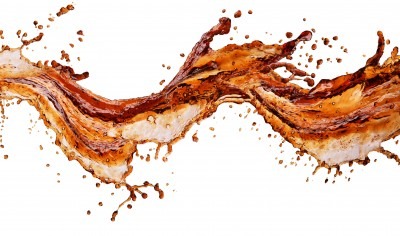Oddities in the History of Contraception: From Coca-Cola Douches to Beaver Testicle Tea
May 23, 2012 by Justin Lehmiller
I recently posted an article discussing how women tend to overestimate the effectiveness of condoms and birth control pills. Even though these contraceptive devices aren’t quite as effective as we might like, they’re certainly far better than what people used to have in the past. In this article, I’d like to take you on a brief tour of five of the most interesting, bizarre, and humorous methods of birth control that have ever been attempted. After reading this, I think you’ll come to have a greater appreciation for modern contraceptives!
5. Crocodile Dung: This is actually one of the earliest known contraceptives, dating back to the ancient Egyptians. In those days, women would fashion a primitive diaphragm out of crocodile excrement and honey that would be inserted into their vaginas to block the passage of sperm [1]. I’m guessing your biggest questions are: Did it actually work? And what’s so special about crocodile poop? Unfortunately, I can’t answer either of those for you. All I know is that I’m never going to look at the crocodile exhibit in the zoo the same way again.
4. The Squat and Sneeze Technique: In one of the earliest gynecological textbooks, women were instructed to hold their breath while they had sex and, afterward, to squat and sneeze as forcefully as possible, presumably to expel sperm from the body [1]. While it’s theoretically possible that the squatting and sneezing action might dislodge a small amount of semen, it’s unlikely that it would result in any meaningful reduction in likelihood of pregnancy. This one was probably based more in superstition than anything.
3. Beaver testicles: For centuries, some Canadian women have been “leaving it to beaver” to prevent unwanted pregnancy. In earlier times, these women brewed tea with beaver testicles, whereas in later times, they opted to drink “beavertinis”—a mixture of grain alcohol and dried beaver testicles. I don’t know of any scientific studies testing the contraceptive qualities of these drinks, but my guess is that the only way they might prevent pregnancy is either by making you sick or by tasting so rancid that they kill the mood.
2. Coca-Cola: At one point in the not-too-distant past, some women used Coke products to flush out their vaginas after sex in an attempt to prevent pregnancy. As hard as this may be to believe, there was actually a paper published in the New England Journal of Medicine as recently as 1985 claiming that this technique actually worked (in fact, the author reported that Diet Coke was superior to regular Coca-Cola for this purpose) [2]! However, subsequent research testing the spermicidal qualities of Coke and Pepsi products (which took the “Cola Wars” to a whole new level) found that sodas weren’t all that effective as contraceptive agents, and could potentially lead to vaginal infections [3].
1. Lysol Disinfectant: Believe it or not, Lysol was marketed as a “feminine hygiene product” in the 1920s (see here for some examples of early advertisements). Many women would douche with a diluted Lysol solution not only to mask vaginal odors, but also to prevent pregnancy. Some women even did this at the instruction of their physicians! Of course, as with Coca-Cola, we later learned that it was not as effective as originally thought and had the potential for negative side effects.
For previous editions of Sex Question Friday, click here. To send in a question for a future edition, click here.
Want to learn more about Sex and Psychology? Click here for previous articles or follow the blog on Facebook (facebook.com/psychologyofsex), Twitter (@JustinLehmiller), or Reddit (reddit.com/r/psychologyofsex) to receive updates.
[1] Jutte, R. (2008). Contraception: A history. Cambridge, UK: Polity Press.
[2] Umpierre, S. A. (1985). Effect of Coke on sperm motility. New England Journal of Medicine, 21, 1351.
[3] Hong, C. Y., Shieh, C. C., Wu, P., & Chiang, B. N. (1987). The spermicidal potency of Coca-Cola and Pepsi-Cola. Human Toxicology, 6, 395-396.
Image Source: 123rf.com
You Might Also Like:

Dr. Justin Lehmiller
Founder & Owner of Sex and PsychologyDr. Justin Lehmiller is a social psychologist and Research Fellow at The Kinsey Institute. He runs the Sex and Psychology blog and podcast and is author of the popular book Tell Me What You Want. Dr. Lehmiller is an award-winning educator, and a prolific researcher who has published more than 50 academic works.
Read full bio >


